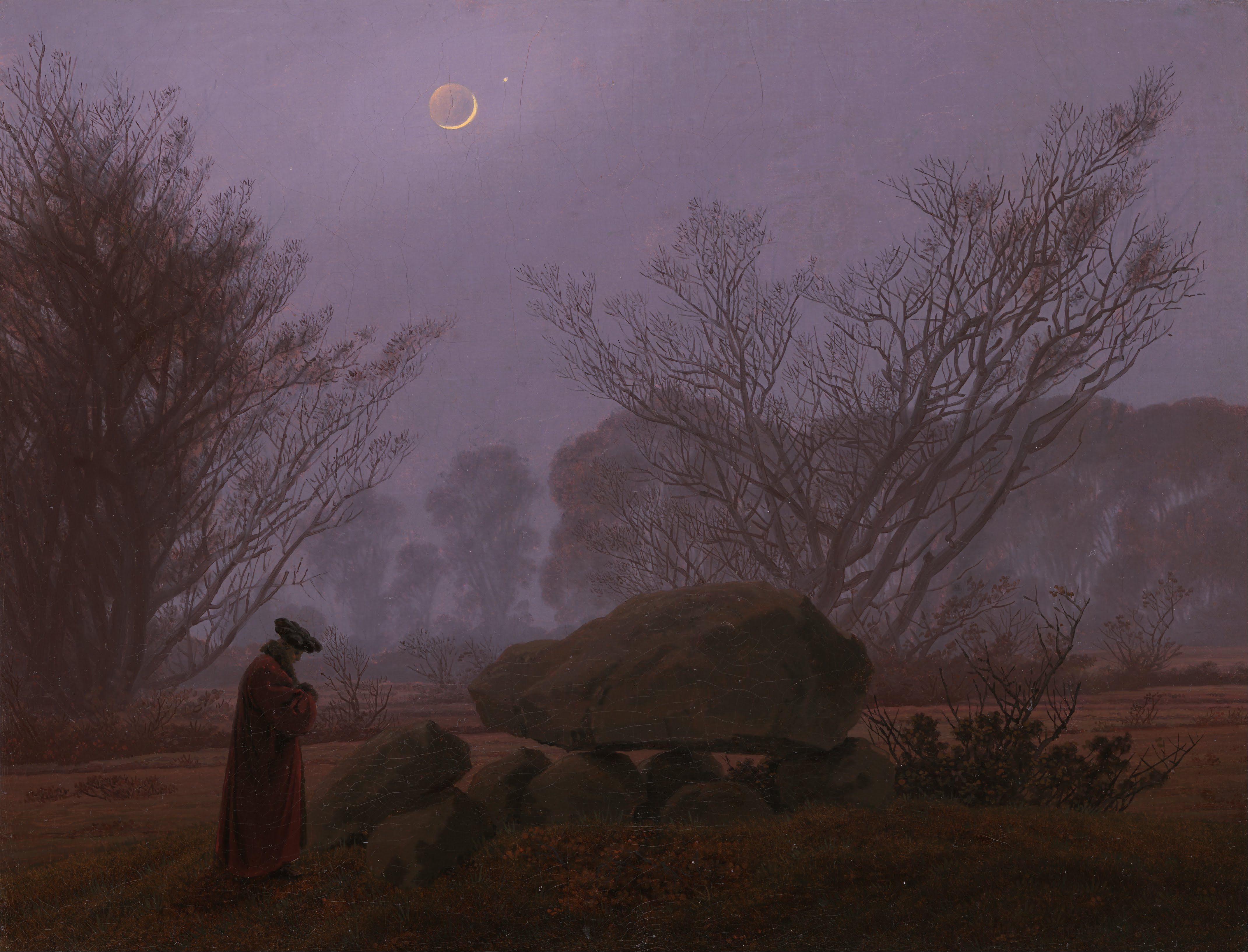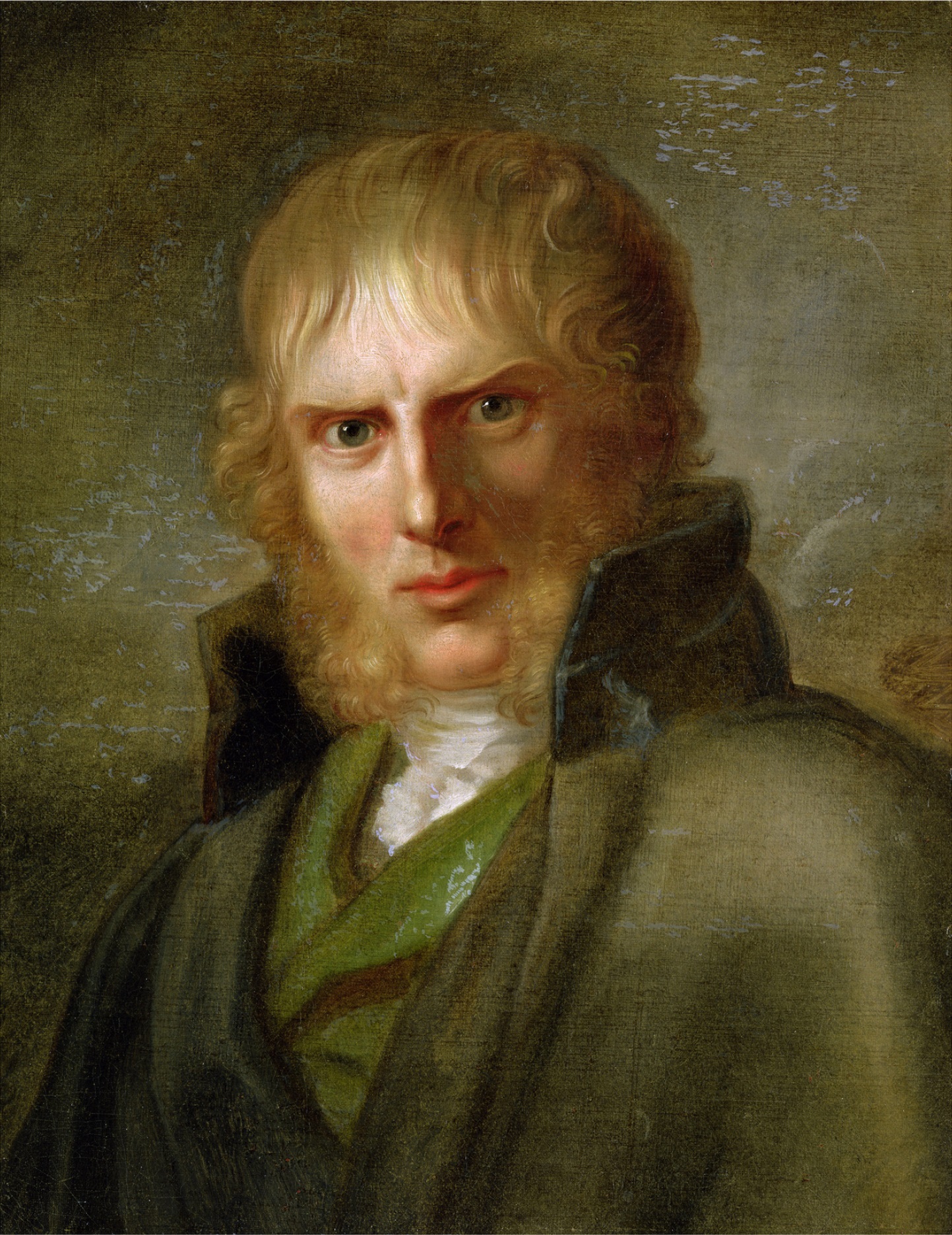His head bowed, a man walks alone in the silvery, cold, moonlit night while contemplating a megalithic tomb and its implicit message of death. It is winter, and all around him, nature is dying. Leafless trees loom behind like specters, but a grove of verdant oaks rises through the mist in the background with the promise of life. The waxing moon, high in the sky, also acts as a counterbalance to death, symbolizing Christ and the promise of rebirth for the artist, Caspar David Friedrich.
Friedrich was part of the German Romantic movement; his deeply personal and introspective vision addressed Christian themes through analogies based on the cycles of nature. A Walk at Dusk was among a small group of works Friedrich completed before he suffered a debilitating stroke in 1835. The painting embodies both the melancholy he experienced during this period and the consolation he found in the Christian faith.


 Caspar David Friedrich
Caspar David Friedrich